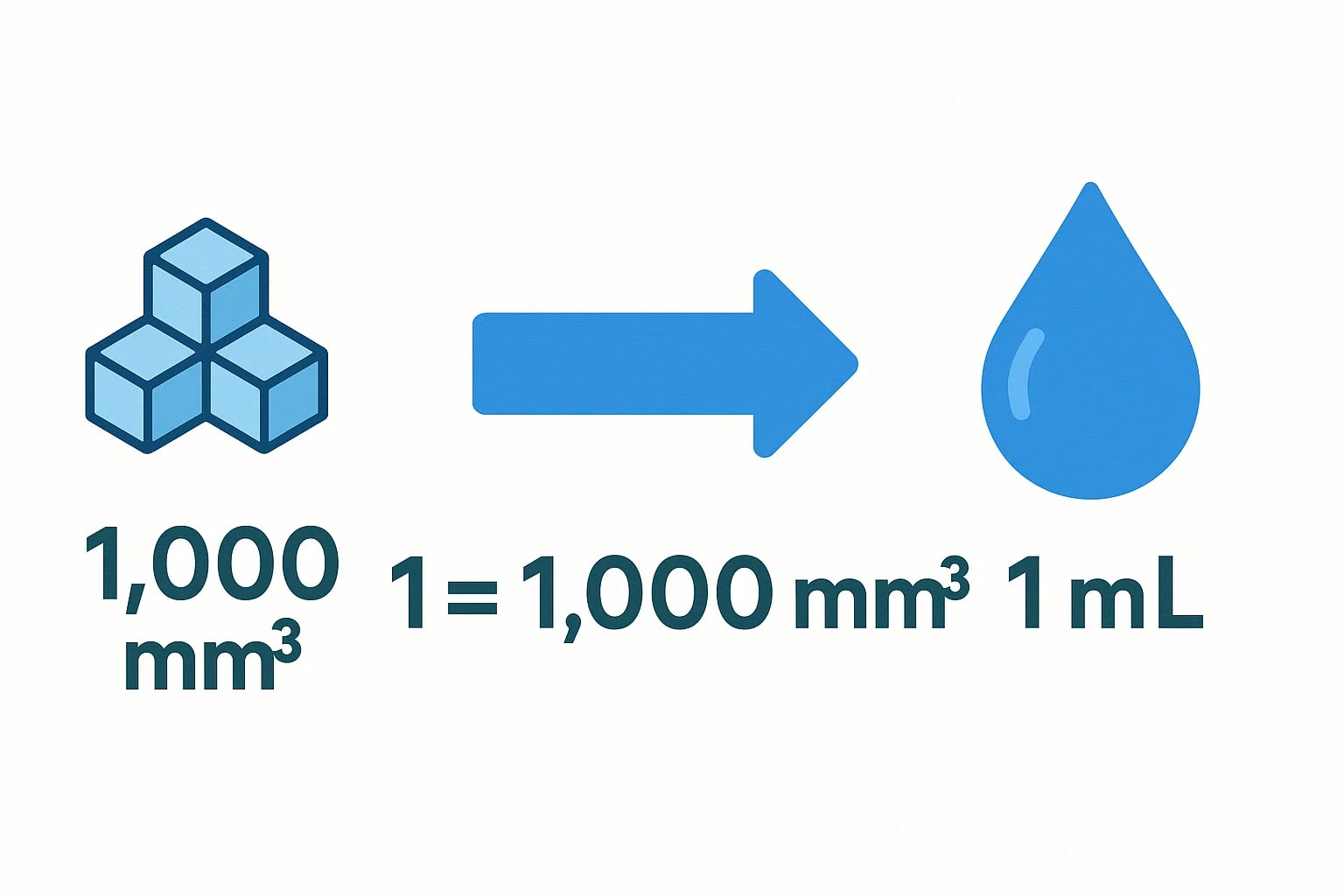cubic millimeter to milliliter – How to convert mm³ to mL
When working with liquids or tiny samples, switching from cubic millimeter to milliliter is a daily necessity in medicine, laboratory research, and product design. While the numbers may look small, precision is everything. Jetcalculator makes this conversion instant, but let’s explore what these units mean, how to convert them, and why they are so important.
What is a Cubic Millimeter (mm³)?
A cubic millimeter (mm³) represents the volume of a cube measuring 1 mm × 1 mm × 1 mm. It is one of the smallest commonly used units of volume. In biology and medicine, cubic millimeters are often used to measure blood cells or tissue volumes. For example, normal red blood cell counts are expressed per cubic millimeter of blood.
What is a Milliliter (mL)?
A milliliter (mL) equals 1/1,000 of a liter or exactly 1 cm³. This makes it ideal for measuring liquids in medicine, cooking, and packaging. A teaspoon holds about 5 mL, making it a unit most people encounter daily. In hospitals and labs, milliliters are standard for dosing medications, preparing chemical solutions, and analyzing fluids.
Formula to Convert mm³ to mL
The relationship between the two units is simple because 1 mL = 1 cm³ = 1,000 mm³:
-
1 mL = 1,000 mm³ -
1 mm³ = 0.001 mL
So the formulas are:
-
V (mL) = V (mm³) ÷ 1,000 -
V (mm³) = V (mL) × 1,000
Example: 2,500 mm³ = 2.5 mL.

Instead of calculating manually, Jetcalculator’s cubic millimeter to milliliter converter gives you results instantly and with precision.
Do you know?
-
Cubic millimeter fact: A single drop of water is about 50 mm³. That means it takes roughly 20 drops to equal 1 mL.
-
Milliliter fact: In the world of cosmetics, luxury perfumes are often sold in 30 mL or 50 mL bottles, yet their formulas are tested in laboratories in just a few cubic millimeters.
From Blood Counts to Life-Saving Doses
One of the most important applications of mm³ and mL comes from medicine, particularly blood analysis.
Doctors often measure red blood cells per mm³ of blood to evaluate a patient’s health. For example, a normal adult has around 5 million red blood cells per mm³. Multiply that by the total blood volume—roughly 5,000 mL in an adult—and you get an astonishing picture of how many cells are working in the body.
This connection between cubic millimeters and milliliters is vital for diagnoses and treatments. For instance, in chemotherapy or intensive care, drug dosages are prepared in mL, but their effects are studied down to the scale of mm³ when monitoring cell activity. Without a reliable conversion, precision medicine would not be possible.
This relationship also extends to modern medical technology. From MRI scans measuring tissue volumes in mm³ to IV infusions delivered in mL, both units work hand-in-hand to ensure accuracy and patient safety.

Precision that Saves Lives
The conversion 1 mL = 1,000 mm³ shows how even the smallest details matter. From a single droplet of water to the total blood in the human body, the link between cubic millimeter to milliliter is crucial in both science and daily life.
With Jetcalculator’s cubic millimeter to milliliter converter, you get fast, accurate results every time. For broader calculations, try our Volume Converter or explore the full range of Conversion Tools to simplify any unit conversion, big or small.

